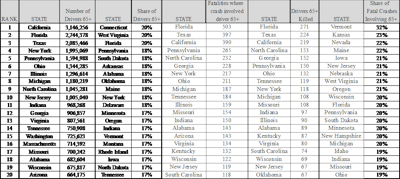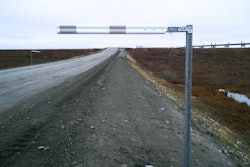As the Baby Boom Generation begins to turn 65, the number of older Americans and their share of the overall population will swell dramatically. But, according to a new report, although these older Americans will be more mobile and active than any previous generation, they will face a transportation system that is inadequate to offer the mobility and safety demanded by older Americans and the population in general. The report, “Keeping Baby Boomers Mobile: Preserving Mobility and Safety for Older Americans,” was released Feb. 22 by TRIP, a national non-profit transportation research group based in Washington, D.C.
Despite their efforts to modify their own driving, and the fact that overall fatalities have declined in recent years, older motorists are still involved in a disproportionately high share of traffic fatalities. In 2010, there were 5,750 fatalities in crashes involving at least one driver 65 or older. And although drivers 65 and older account for eight percent of all miles driven, they comprise 17 percent of all traffic fatalities. Data for each state can be found in the report’s appendix.

“The growing ranks of older Americans will far outpace previous generations with their level of mobility and activity. Serving their needs will require a transportation system that includes safer roads, safer vehicles, safer drivers and improved choices,” said Will Wilkins, executive director of TRIP. “Congress can help not only older drivers, but all drivers by passing long-term federal surface transportation legislation now.”
The TRIP report offers a set of recommendations to improve the mobility and safety of older Americans. Since many of these recommendations are designed to reduce the consequences of driving errors, they would make roads safer for all Americans. These recommendations include the following:
- SAFER ROADS: clearer, brighter and simpler signage with large lettering; brighter street markings, particularly at intersections; widening or adding left-turn lanes and extending the length of merge or exit lanes; adding rumble strips.
- SAFER DRIVERS: promoting education and training programs for older drivers; evaluating and monitoring “at risk” older motorists through appropriate licensing requirements.
- SAFER VEHICLES: improving vehicles to help withstand and avoid crashes.
- IMPROVED CHOICES: ensuring public transit routes, vehicles, facilities and stops are easily accessible and accommodating to older or disabled passengers; and expanding non-traditional approaches tailored to the needs of older adults.












